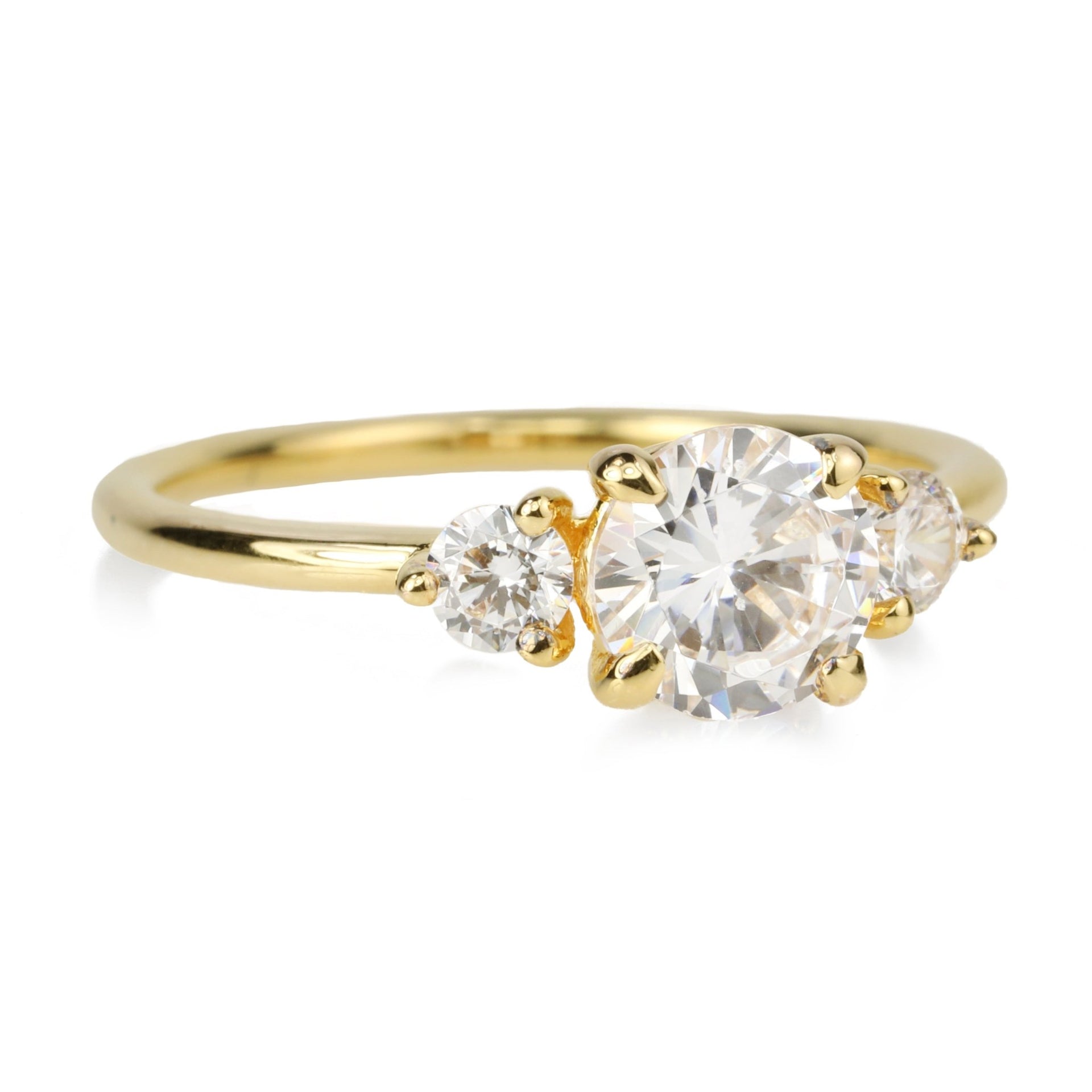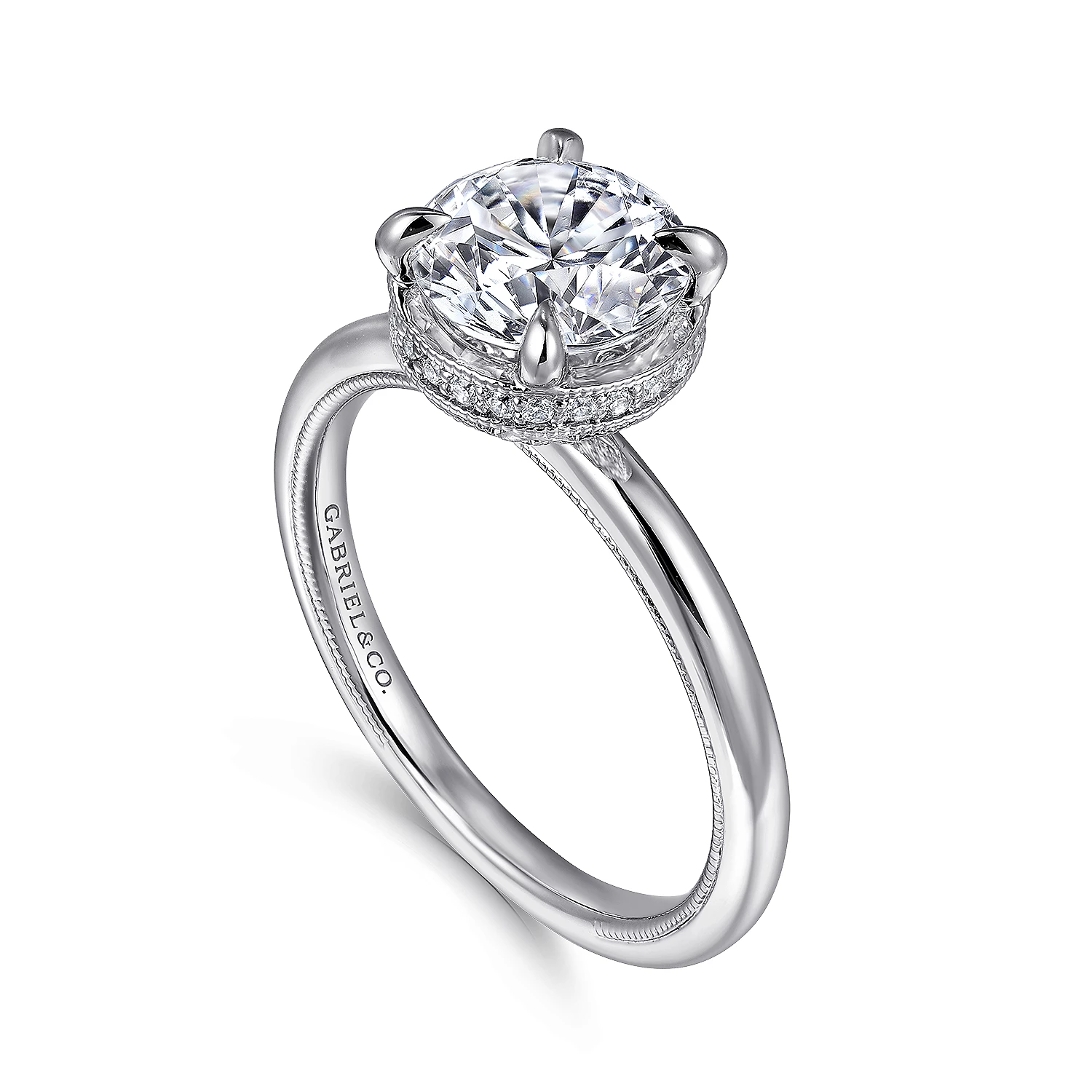Recognizing the Advantages of Laboratory Grown Diamond Involvement Rings in Today's Market
Lab-grown Diamond interaction rings are becoming increasingly prominent in today's market. These options to mined diamonds provide a series of advantages that interest modern customers. From environmental sustainability to cost savings, lab-grown rubies provide a compelling choice. Their enhanced top quality and customization choices further add to their allure. Nevertheless, the expanding rate of interest questions about the ramifications of these choices. What variables should pairs take into consideration when choosing for lab-grown over traditional diamonds?
The Environmental Benefits of Lab-Grown Diamonds
As consumers progressively prioritize sustainability, lab-grown diamonds arise as an engaging option to their mined counterparts. These artificial gems are produced in regulated atmospheres, significantly minimizing the environmental impact related to standard Diamond mining. The extraction of natural rubies usually causes habitat damage, dirt erosion, and water air pollution, devastating regional communities. In contrast, lab-grown diamonds require less land and water, minimizing resource deficiency.
The power made use of in the creation of lab-grown diamonds can be sourced from sustainable power, further lessening their environmental effect. This procedure not just curbs carbon exhausts yet additionally advertises sustainable methods within the precious jewelry industry. Consumers that select lab-grown rubies add to a much more environmentally pleasant and ethical market, straightening their acquiring selections with their values. In general, lab-grown diamonds offer a remedy that integrates luxury with environmental duty, interesting a growing demographic concerned about sustainability.
Cost-Effectiveness of Lab-Grown Involvement Rings
While numerous couples look for to balance high quality and spending plan when selecting interaction rings, lab-grown rubies supply an affordable option without endangering on beauty or resilience. Typically valued 20-40% lower than their natural counterparts, lab-grown diamonds allow couples to allocate their budget plan much more flexibly, making it possible for larger carat weight sizes or greater high quality rocks for the same rate. This price does not take away from the aesthetic charm; lab-grown diamonds display the very same brilliance and clarity as mined diamonds, many thanks to similar chemical and physical buildings. Furthermore, the market for lab-grown rubies is increasing, bring about competitive pricing and increased availability. Pairs can additionally delight in a wider series of designs and settings without the financial stress often related to standard rubies. On the whole, lab-grown engagement rings present an attractive monetary option, making them significantly prominent amongst modern pairs who prioritize both expense and high quality in their getting choices.
Moral Considerations in Picking Lab-Grown Diamonds

Customers are increasingly worried concerning the origins of their acquisitions, and lab-grown diamonds provide a transparent supply chain. Each Diamond features accreditation outlining its production process, making sure buyers can make informed options. In addition, the production of these rubies typically makes use of renewable resource resources, further lining up with eco-conscious values. For individuals prioritizing moral intake, lab-grown rubies present a responsible choice that combines high-end with moral honesty, appealing to modern sensibilities in interaction ring options.

Top quality and Appeal: Contrasting Lab-Grown and Mined Diamonds
The comparison between lab-grown and mined rubies discloses noteworthy distinctions in aesthetic characteristics and sturdiness. Lab-grown diamonds usually exhibit superior clarity and color consistency, while extracted diamonds can present special incorporations and variants. Additionally, both types share the very same solidity, making them similarly appropriate for interaction rings.
Visual Qualities Contrast
Just how do lab-grown rubies contrast to their extracted equivalents concerning aesthetic qualities? Both kinds of rubies share identical physical and chemical buildings, making it testing to compare them without specialized equipment. Lab-grown rubies often show fewer additions and acnes, leading to premium quality. Additionally, they can be produced in a wider array of colors, permitting unique personalization choices. While extracted diamonds are treasured for their all-natural beginning and regarded rarity, lab-grown diamonds can accomplish equivalent appeal and brilliance, commonly at a reduced price. Inevitably, the selection in between both may boil down to individual preference, however visually, lab-grown rubies stand as a compelling choice, flaunting quality that matches their all-natural counterparts.
Resilience and Firmness Variables
While both lab-grown and mined diamonds possess outstanding durability, their solidity remains a specifying characteristic that highlights their viability for daily wear. Rubies are ranked a 10 on the Mohs scale of mineral hardness, making them the hardest natural material recognized (lab grown diamond engagement rings). This particular assurances that both kinds of diamonds stand up to damaging and keep their brilliance in time. Lab-grown diamonds, developed under regulated conditions, display the exact same solidity and physical residential properties as their mined counterparts. Consequently, his explanation they provide a appealing and durable alternative for engagement rings. Customers can with confidence select either type, recognizing that both supply enduring high quality. Inevitably, the selection in between lab-grown and extracted diamonds might come down to personal worths as opposed to distinctions in sturdiness or firmness
Modification Options for Lab-Grown Diamonds
Lab-grown diamonds provide a large range of personalization choices that deal with individual preferences. From special style opportunities to numerous shade and cut choices, these diamonds can be customized to match any type of personal style. This level of personalization assurances that each interaction ring can mirror the distinctive tastes of the wearer.
Special Style Possibilities
Many layout opportunities wait for those curious about lab-grown Diamond engagement rings, enabling pairs to reveal their special love stories. With the flexibility of lab-grown rubies, designers can discover a variety of styles, from look at this website timeless jewelry to intricate vintage setups. Pairs can select from different forms, such as round, princess, or emerald cuts, each offering a distinctive character. In addition, the capacity to choose unique metal types, consisting of white gold, rose gold, or platinum, further boosts modification. Lab-grown diamonds can additionally be morally sourced in various carat weights, making it possible for couples to locate the ideal balance between size and budget plan. This flexibility allows each ring to reflect the private tastes and choices of the pair, making it a truly personal symbol of their dedication.
Customization for each Style
The adaptability of lab-grown rubies extends beyond distinct style opportunities, offering considerable modification choices to suit every couple's design. Pairs can pick from different setups, metals, and band styles, assuring that their interaction ring reflects their originality. Alternatives vary from traditional jewelry to modern-day halo layouts, permitting personal expression in every option. In addition, couples can select particular functions such as engraving, including emotional value and individuality to their rings. The capacity to customize warranties that each ring is not only a representation of love however also a reflection of individual taste and way of living. This degree of customization makes lab-grown diamonds an appealing choice for those seeking a distinct and purposeful interaction ring.
Shade and Cut Selections
Interaction rings including lab-grown rubies provide a magnificent selection of shade and cut choices that boost their attraction and uniqueness. Unlike standard diamonds, lab-grown alternatives can be created in a substantial series of tones, including pink, blue, and yellow, permitting pairs to select an uniquely personal touch. These dynamic colors can offer as a significant representation of love and dedication.
Furthermore, lab-grown diamonds can be found in various cuts, including round, oval, and princess, each adding to the rock's radiance and aesthetic appeal. This versatility allows pairs to personalize their rings to mirror their styles and choices. Eventually, the availability of diverse shade and cut alternatives makes lab-grown Diamond interaction rings a preferred choice for contemporary couples looking for customization.
Patterns and Appeal of Lab-Grown Diamonds in 2023
As customers increasingly prioritize sustainability and honest factors to consider in their buying choices, the appeal of lab-grown rubies has risen in 2023. This year, the market has seen a noteworthy shift, with more pairs selecting these rubies due to their lower environmental impact and transparent sourcing procedures. Lab-grown rubies are not only significantly more budget-friendly than their extracted counterparts, but they likewise provide a selection of styles and customization options more information that appeal to modern consumers.
Sellers have actually reacted to this expanding fad by increasing their collections and highlighting the special high qualities of lab-grown rocks, such as their sparkle and quality. Social media site and influencer endorsements have further amplified understanding, making lab-grown diamonds a trendy choice for involvement rings. As education concerning the benefits remains to spread out, it is expected that the marketplace share of lab-grown rubies will remain to climb, solidifying their area in the precious jewelry sector.
Often Asked Concerns
How Are Lab-Grown Diamonds Developed in a Lab?
Lab-grown rubies are created utilizing two main techniques: High Pressure High Temperature (HPHT) imitates natural Diamond development problems, while Chemical Vapor Deposition (CVD) utilizes gas to precipitate carbon onto a substratum, creating diamonds layer by layer.
Do Lab-Grown Rubies Hold Their Value Gradually?
Lab-grown rubies normally do not hold their value along with all-natural rubies. Market variations and consumer assumptions affect resale costs, causing lower lasting worth retention for lab-grown alternatives contrasted to their all-natural counterparts.
Can Lab-Grown Diamonds Be Resized Like Mined Diamonds?
Lab-grown diamonds can be resized likewise to extracted rubies, as they possess comparable physical properties. Jewelers normally use common methods for resizing, making certain that both kinds of diamonds keep their integrity and aesthetic appeal during the process.
Are Lab-Grown Diamonds Available in Various Sizes And Shapes?
Lab-grown rubies are certainly offered in a range of dimensions and forms. They can be customized to satisfy specific preferences, using choices like round, princess, oval, and emerald cuts, to name a few, guaranteeing varied choices for customers.
Just how Do I Confirm the Credibility of a Lab-Grown Diamond?
To verify the credibility of a lab-grown Diamond, one should speak with a reliable gemologist or get a certification from an acknowledged grading research laboratory, which generally consists of information about the Diamond's beginning and features.
Lab-grown diamonds are produced in controlled atmospheres, removing the environmental devastation commonly linked with standard Diamond mining. lab grown diamond engagement rings. Lab-grown diamonds commonly show remarkable quality and color consistency, while mined diamonds can offer one-of-a-kind inclusions and variants. While extracted diamonds are valued for their all-natural origin and viewed rarity, lab-grown rubies can achieve equal charm and sparkle, typically at a reduced expense. Lab-grown diamonds generally do not hold their worth as well as all-natural diamonds. Lab-grown diamonds can be resized in a similar way to mined rubies, as they have comparable physical properties